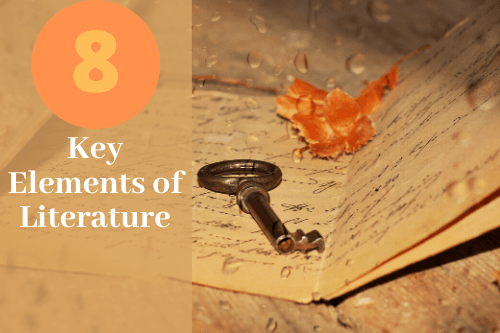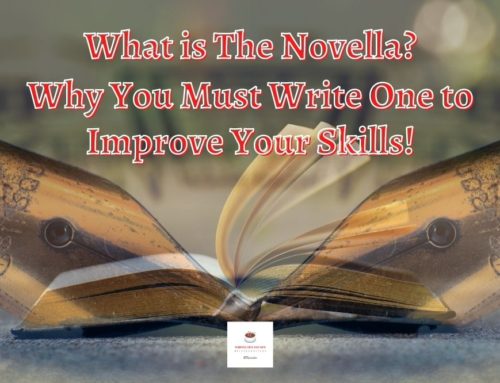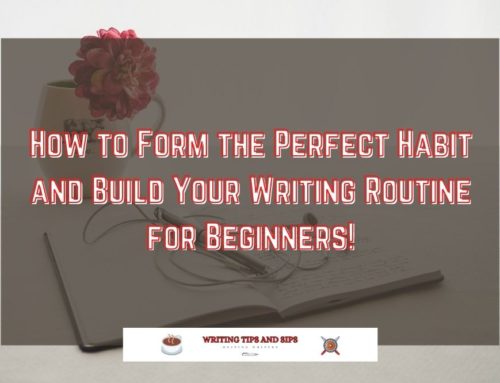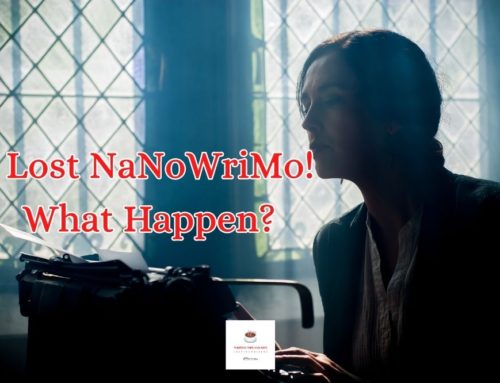During my first year in my creative writing master’s program, the realization that all literature has eight common elements: hit me. All classes talk about the elements, in one form or another, sometimes with different names, but always referring to the same thing.
It doesn’t matter the genre: fiction, poetry, non-fiction, drama, etc. your writing must use these eight elements to be taken seriously.
The eight key elements are a transformational arc, configured time, field of action, persona, voice/style, point of view, conflict/tension, and imaginal patterns.I have struggled to understand these terms and didn’t get it until my Literary Genres for Creative Writers class. After reading a plethora of books, analyzing them, and picking them apart, I was able to see what they mean and how they can help my writing. Without further ado, I share my findings with you!
1. Transformational Arc:
The transformational arc is the first, and perhaps the most crucial element of literature. More than changing the character through a story, it encompasses the transformation within the reader on an emotional and intellectual level. Save the Cat! is considered a transformation machine – plotting the character’s change over a period of time and how that change affects the reader.
When I read a story, I feel I’m a part of the world and feel a connection to the characters on the page. Harry Potter goes through a transformation from a muggle, nobody child, to a wizard excelling in the wizarding world in “Harry Potter and the Sorcerer’s Stone.” At the same time, I’m rooting for him to succeed – feeling his emotions and going through the transformation with him.
Every transformation has a significant turn, a point in which the transformation hinges upon. It cannot happen without that turn. In Save the Cat! It is known as the dark night epiphany: the moment when the character realizes the answer to their flaws and makes the change.
2. Configured Time:

The second key element’s goal uses time to support the transformation. It configures time in a way to best shape the transformation and stimulates a response from a reader. Clock time and configured time are not the same things, but it does have to make sense to the reader. Using the flow of time and flash-forwards and flashbacks shape the transformational arc.
Harry Potter uses configured time by jumping through the months of the school year. We see significant events happen when they are essential and gloss over moments that have no impact on the story.
It took me a while to understand this concept, because I thought there had to be more to it, but no. It is only the way the writer uses time to build their story.
3. Field of Action:
Field of Action is the setting the story takes place in, but more than that, it is the emotional and mental space in which insights interact with the reader.
Let’s break that down.
First, the setting helps support the arc of the story. Where the action is happening is relevant to the themes and messages gained within the text. The environment makes sense for the character to be there, and supports the transformation the protagonist is undergoing.
Not every text has a setting, but it would still have a field of action, since it interacts with the reader, by playing with a specific state of mind. An example from my class: “He who has seen everything empty itself is close to knowing what everything is filled with” (Antonio Porchia.) This interacts with the reader’s mind and has a transformation in the reader’s understanding of life.
Fiction generally has a setting for the field of action, think Hogwarts in Harry Potter. The wizarding world and the series as a whole would be entirely different if it took place anywhere else. It supports the narrative and transformation.
4. Persona:
The persona of a text is either an identifiable character, an unidentified speaker, or a mask representing the author. The persona and the author are not the same person. In fiction, we generally follow a character or a bunch of characters, and we hear the narrative play out in their voice.
The persona is the narrator telling the story – either a character in the narrative or an unidentified character telling the story. It can only be a mask of the author cause the persona can never fully encapsulate the author.
The persona in Harry Potter is an unidentified speaker that knows more than the protagonist.
I struggled to learn persona because it is very similar to voice/style. I had trouble differentiating the two and the secret: persona is who is talking, and voice is how they speak.
5. Voice/Style:

Similar to persona, voice is related to how and by whom the story is told. The voice and style are a creation of the author, including word choice, syntax, rhythm, and sound patterns. Every story is told in a specific style, and that style helps support the transformation by giving insight into the world of the persona or characters.
In one of my short stories, I used an unreliable narrator to build suspense. The action takes place in the first-person perspective of my protagonist, and we learn things as she does. The world is not as it seems, and it is in this style that the suspense rides upon. If the reader knew from the onset what my protagonist doesn’t know, then the twist would have no impact.
The voice can be authentic or phony, reliable or unreliable, or aggressive or passive; it must support the transformation and push the reader to that mental place.
Which one to choose depends on the needs of a particular narrative and can vary depending on the end goal.
6. Point of View:
The point of view is the lens from which we see the narrative. It determines how close or far we are from the action and allows us to get into a character’s head or only know what is shown through an outside eye.
The point of view can be 1st person, a very close point of view only following one character; 3rd person omniscient or close, a farther back lens than the former but can still get pretty personal with one character or follow a group of characters; and 2nd person which is similar to these blog post when I talk to you.
Persona, voice, and point of view all work together to manipulate the reader’s understanding of the transformation the writer intends. It is who is talking, how they say it, and how we see it.
Harry Potter uses a close third-person perspective to follow Harry on his journey in Hogwarts. As a reader, we go in with the same innocence as Harry to the world being presented, and as the series grows, so too does our understanding of the world.
7. Conflict/Tension:
Now we are getting into the good stuff. The meat of your narrative and the primary condition for the transformation to occur.
Conflict is what drives the story. It can be internal or external, and most often both. I talk about wants and needs here; they are the driving forces of conflict. They show your character’s flaws and motivations.
Your character needs to be human to be relatable, so they are going to have a flaw.
Harry Potter is not confident and knows little about his past. The fault creates conflict, and conflict leads to transformation. Your character is going to try so desperately to change those flaws that they will lose everything, and then the turn happens, and they are cured!
Making sure every scene has conflict was the most challenging thing I had to learn to go through both my master’s program and my undergrad screenwriting program. If there is no conflict, the scene is not exciting, and the audience will grow bored. There needs to be an internal or external struggle happening to keep the narrative moving.
8. Imaginal Patterns
Imaginal patterns are the most abstract of the key elements and were the hardest for me to comprehend. I admit, I still have trouble spotting them in readings, and I often glance over them without realizing it. They are subtle and require a keen understanding of figurative language and cultural references.
Imaginal patterns relate to images and/or imagination to paint a picture in the reader’s mind. In poetry, it is often the central image of the poem.
For example, my poem (I use this example, not as a perfect example of poetry, but because it is mine and I can clearly state the intended imaginal patterns):
Elvine’s Embrace

Moments before running free
Arrows chase – there’s no escape.
Heartbeat quickens beyond belief
My feathery skin lies agape.
Body decays to dirt and dust –
Energy becomes one with life.
A flower, tree, bird, or elvine
Whichever – all will end my strife.
An elvine’s touch –
“Ragok amie.” (let this soul pass in peace.)
I grasp for air;
Let this Pain, please, cease.
A brilliant orange hue around,
A warmth guiding the end tittered,
A gasp for breath and
A smile from an angel: delivered
“I’m sorry little one.”
She says to me
“Fly far, far, away
From the hate with glee.”
*Elvines are a fictional race of my world Symphonia, They are a half-cat/elf humanoid creature with a strong spiritual connection to the world
*Ragok Amie is an elvine phrase in their native language.
The imaginal pattern in Elvine’s Embrace is that of a bird shot with an arrow and becoming one with nature. I use ideas of spirituality to show the bird turning into dust, passing away, and going back into the universe. Until the turn and the transformation when the Elvine uses their spiritual magic to give new life to the bird, does the image change.
Conclusion:
The eight key elements of literature are found across all genres and are a natural part of the writing process. Most of the time, when plotting and writing a story, these element will appear without thought or intention.
They just are.
They are essential building blocks and engraved into our perception of literature.I have written many stories without thinking about these keys and went back to look for them, and they were all there. Look at my poem and try to find all the elements, I dare you!
C. D. Baron
Latest posts by C. D. Baron (see all)
- What is The Novella? Why You Must Write One to Improve Your Skills! - 03/21/2021
- Wake Up! A Short Story (Work in Progress) - 02/07/2021
- My Top 5 Favorite Reads of All Time (So Far) - 01/24/2021





